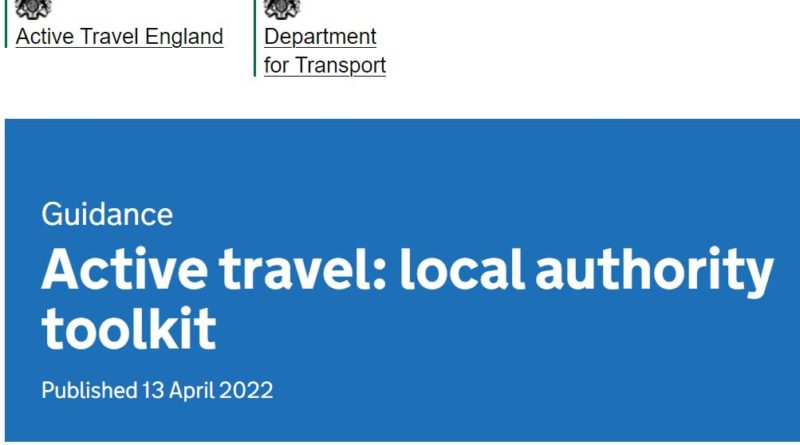Local authority guidance sheet issued on active travel provision
The Department for Transport has issued a local authority cheat sheet this week covering all things active travel, including development of infrastructure plans, demand management plans and behavioural change programmes.
Most important of all, the guidance has as a footnote the tools and funding options available to local authorities; at least those which have not already burned bridges by pushing sub-standard schemes to date.
Highlighting an increased public access to bicycles (up to 47% from a three year average of 42%), the Government appear keen to retain at least some of the early Covid era momentum that saw cycling rates surge by over 300% where lockdown and quiet road conditions existed. A National Travel Attitudes study found that 93% of survey respondents hoped to continue to cycle when Covid-led ’emergency’ infrastructure was laid to promote active travel. Unfortunately for those wanting to cycle safely, many of those temporary schemes have now ceased to exist.
The National Travel Attitudes study is frequently flagged in the guidance, illustrating to local authorities that cycling is on the up – 23% more people cycled for part of their journeys in 2020 and the average volume of trips sat 26% up. This equated to an average mileage 62% up and more than double the rate in 2002.
To maintain cycling rates it is noted that, for the cyclist existing and new, that segregation from traffic is a top priority; this requirement was cited in 55% of responses in the travel survey when asked what would encourage greater use of cycles. 53% cited safety concerns as a primary factor in leaving the bike at home, while 49% simple stated “well-maintained surfaces” would encourage them to cycle more journeys. The majority – 64% – support the creation of dedicated and segregated cycle lanes, something that should give councillors the confidence that the electorate do indeed wish to cycle more.
Further segments of the guidance cover bike sharing schemes, diverting to the superior knowledge of CoMoUK on how to successfully implement schemes. There’s the data on how greater levels of active travel can equate to lowered emissions, the physical and mental health benefits to a locality, plus some excellent myth busting about the value of cycling to a local economy.
On this note, the guidance flags “The LGA highlights how, after a Canadian council reallocated high street parking as bike lanes or cycle parking for a year, businesses benefitted from increased footfall (20% increase), spend (16% increase) and increased frequency of return visits (13% increase).
Furthermore, there is light guidance on the legality of electric bikes and catering for disabilities as part of infrastructure planning.
The full local authority guidance can be found here.



